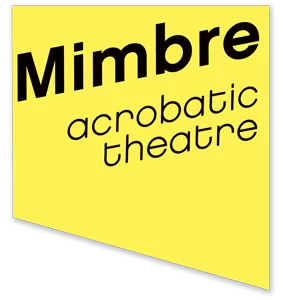

Mimbre have an on-going research strand, lead by joint artistic director, Silvia Fratelli, exploring and understanding the effects of intensive training and touring on the physicality of performers. Her findings are adopted and continuously explored through her work with body conditioning and day-to-day while training with our acrobats.
Often circus performers’ bodies are pushed to the limit, trying to reach the impossible through hard and intensive training, long hours spent on the road touring and sometimes a total disregard to the delicate balance that we need to find to be able to sustain this kind of training.
The desire to understand how to reach this balance and keep as healthy as possible for a long and successful career, made us eager to start creating a model of best practice for circus performers and acrobats in particular.
Our research journey started in 2011, with a collaboration with Laban Dance Science Department, Adrian Porter (Degree Year Manager at the National Centre for Circus Arts and former Cirque du Soleil’s Acrobatics coach) and James Wellington (Performing Arts Physiotherapist). The aim was to start exploring models for optimal training and provide better health provisions for circus performers.
We started with physical screenings at Laban and physiotherapist assessments with James Wellington (head physio at Perform Health), to create individualised training and conditioning programmes prior to the rehearsals period. The aim was to create an appropriate training program for each member of Mimbre to be able to achieve certain performance objectives.
When choosing the tests, we tried to consider what was most relevant to Mimbre, in terms of organising the training and doing an individual ‘needs analysis’.
We took into consideration:
We found that some of tests were more relevant than others, and with a follow up assessment after the rehearsals and touring period we did notice an improvement in the general health and specific abilities of each performer.
Most recently, Silvia has also collaborated with Glen Stewart, Head of Training at the National Centre for Circus Arts to deepen the knowledge and understanding of the human body in movement, together they launched the first UK Acrobatic Symposium in October 2015.
The Symposium brought together specialists from sports medicine, dance and movement sciences as well as circus experts. The event was very successful and highlighted the general need from circus performers and therapists to understand and know more about our bodies in movement.
The research project is ongoing and aims to:
If you’d like to discuss our findings in more details, advice on how to approach the development of tailored training programmes or collaborate with us on any aspects of this research, please get in touch with: silvia@mimbre.co.uk
Watch this space for more!